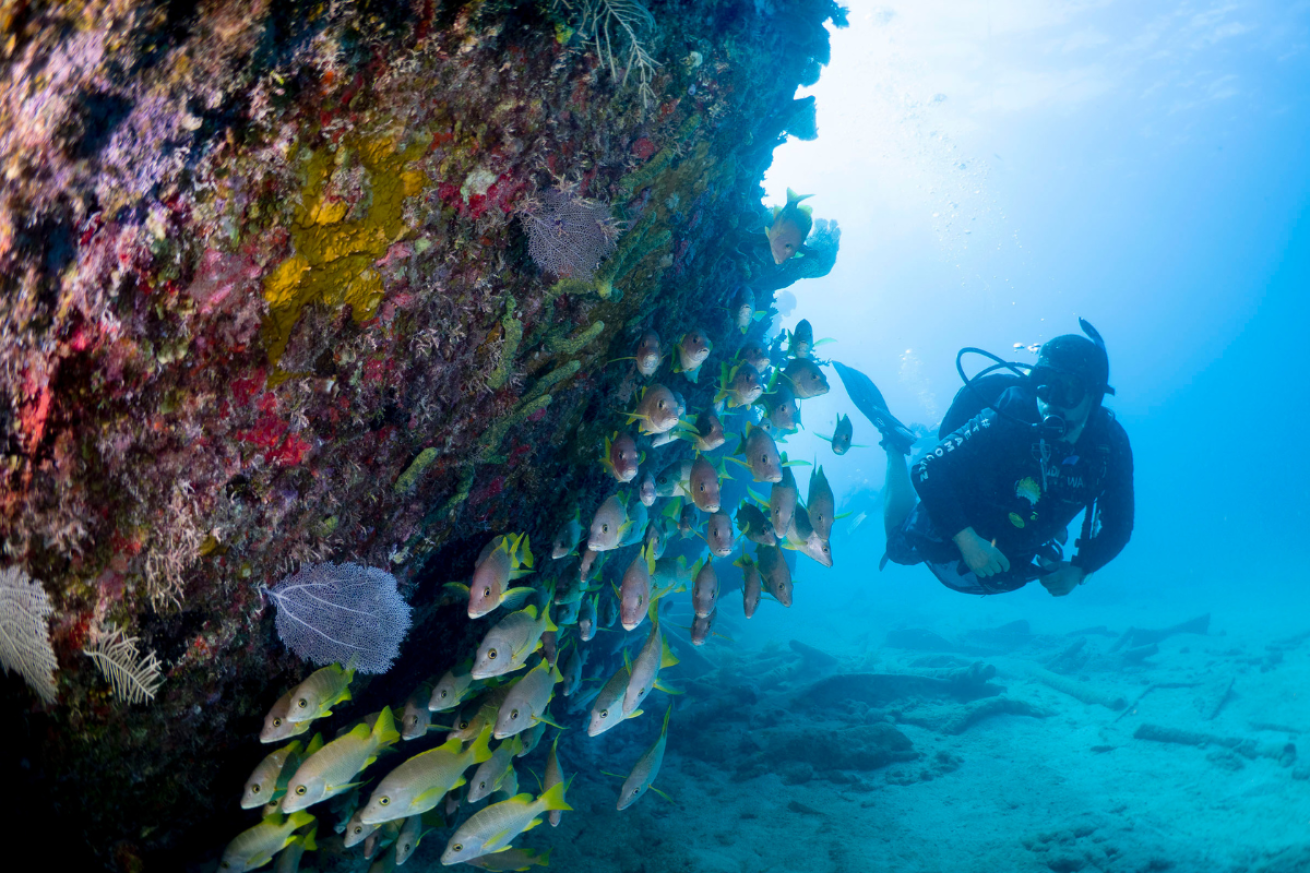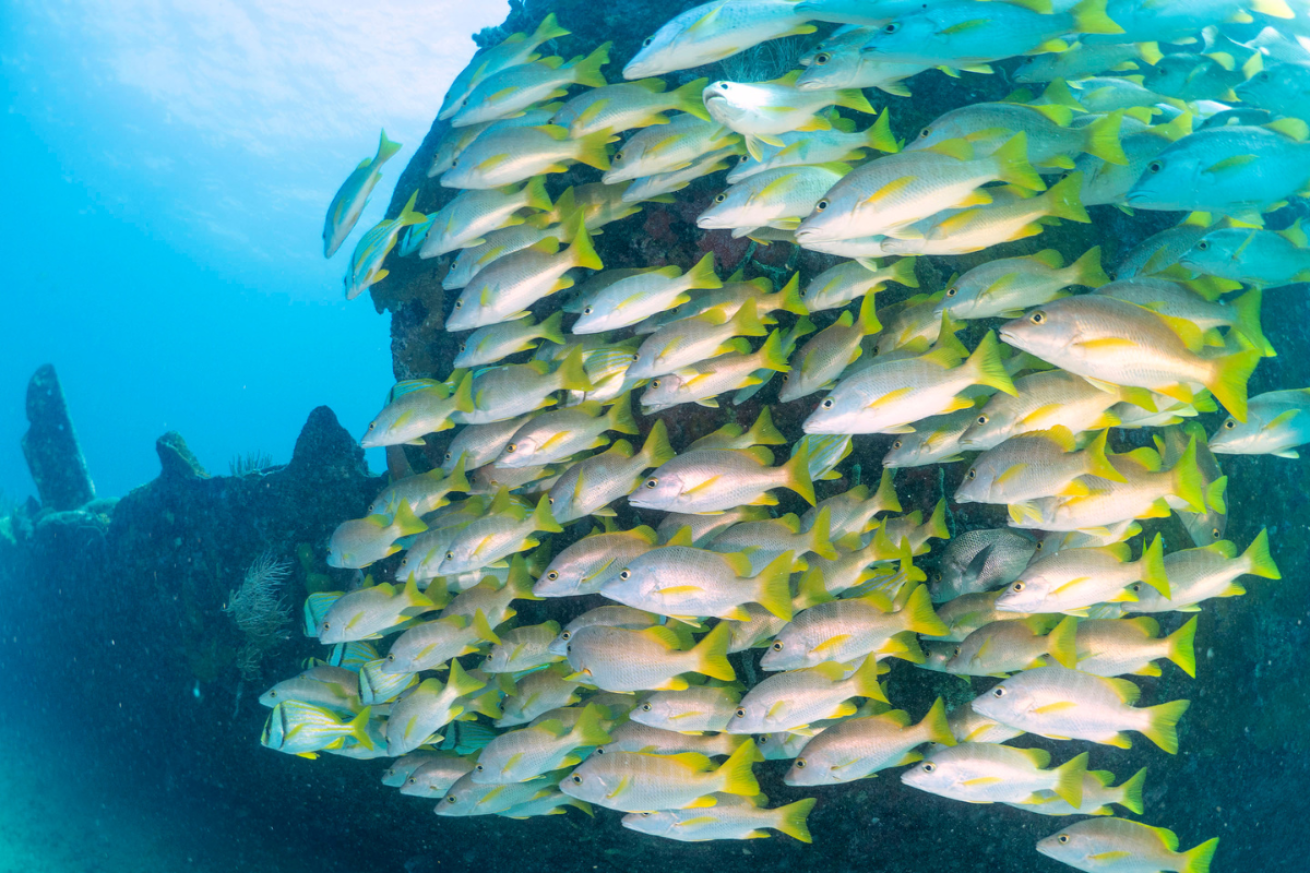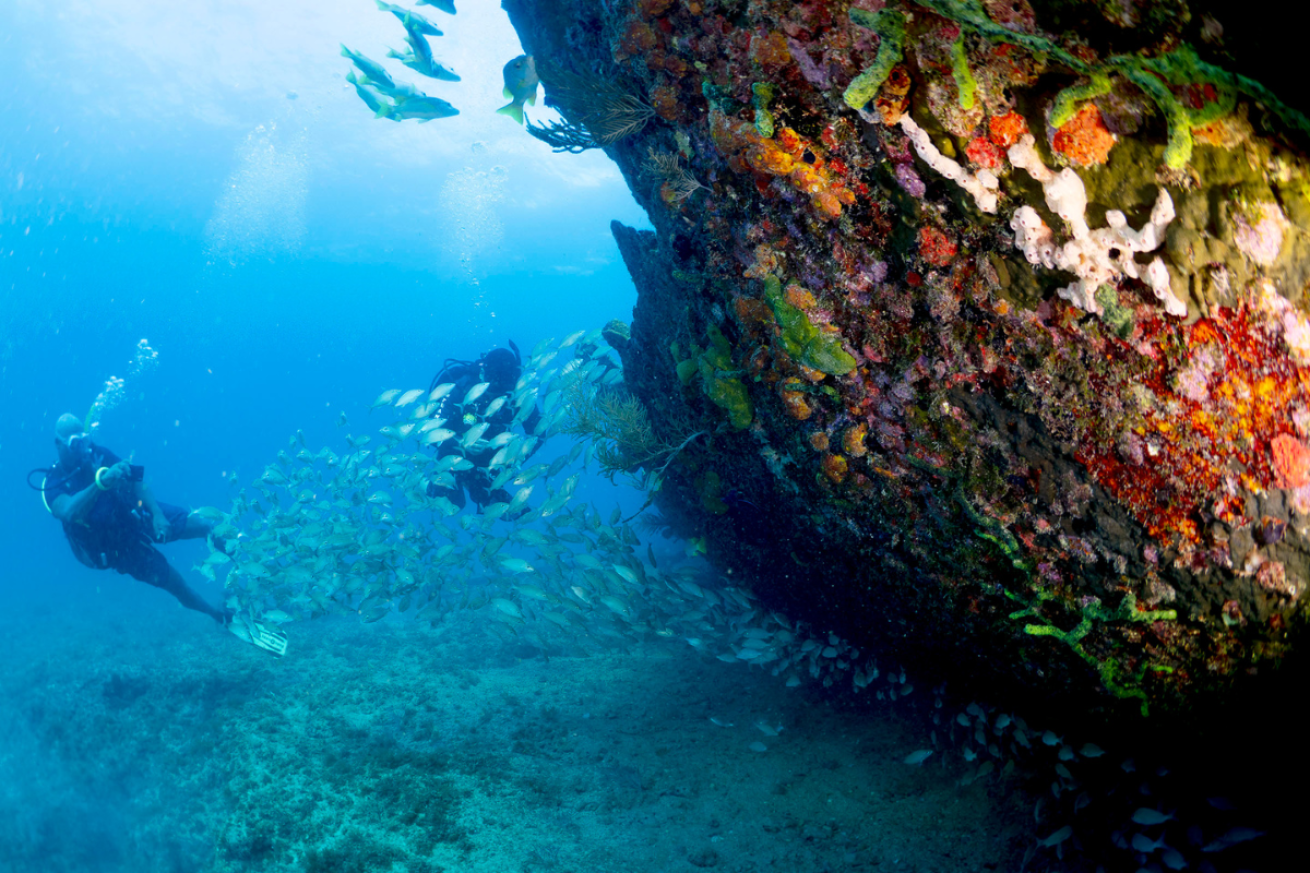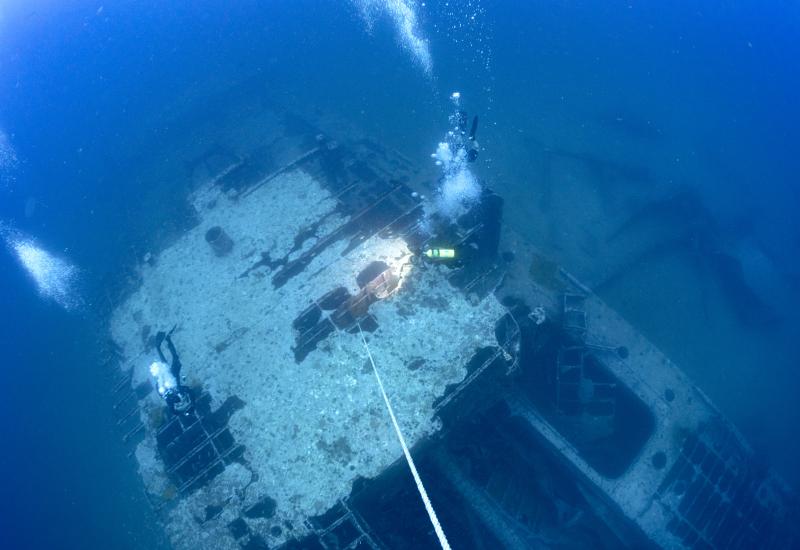The Wreck of the Benwood is a Joy for New Divers to Explore

David BenzA casualty of World War II, the Benwood shipwreck is now home to huge schools of grunt and porkfish.
One of scuba diving’s most thrilling adventures, there’s nothing like exploring a shipwreck that’s been reborn underwater and subjected to the sands and currents of time.
Finning over the bones of a boat that once teemed with topside life and seeing it completely overtaken by fish and other critters makes for a singular experience that few people in the world get to witness. Wreck diving is just one of many things that make diving great, and certainly among the most memorable underwater experiences.
And while some shipwrecks met their watery graves at depths only accessible to experienced divers or submersibles, there are many others that found their fates in far shallower waters, making them ideal for beginner divers to explore.
The SS Benwood, just offshore from Key Largo near French Reef and one of the nine shipwrecks that make up the Florida Keys Wreck Trek, is one such shallow shipwreck. It’s been down a long time and is loaded with life, making it a fan favorite among both new and more experienced divers.
A former merchant marine freighter, the 360-foot-long metal-hulled Benwood was originally built in England in 1910 and spent most of its career transporting ore. The ship was on a run through the Florida Keys in 1942, carrying phosphate rock cargo between Tampa, Florida, and Norfolk, Virginia, when she met her demise on a shallow reef close to shore.

David BenzYellowtail snapper
Cruising without lights as a safety precaution to keep the ship out of view from German U-boats rumored to have been in the area, the Benwood’s captain had no idea the ship was on a collision course with another boat, the Tuttle, similarly traveling in blackout conditions.
In the darkness, the Benwood collided with the Tuttle’s port side in an instant, and her bow was crushed. She took on water before the captain ordered everyone to abandon ship. After the parts above water that were navigational hazards were removed or salvaged, the ship reportedly took another beating when it was used for aerial bombing practice by the U.S. Army. And while the Benwood’s destruction is plain to see for any diver or snorkeler who ventures down to take a look at her wreckage, she positively vibrates with marine life in every nook.
“You can see the dent in her bow where the two ships collided,” says Dan Dawson of Horizon Divers, who loves to bring new divers down to see the Benwood’s exposed ribs lying on the seabed, gaze upon her resting anchor, and experience what’s often their first dive on a true shipwreck.
The Benwood sits at depths of 25 and 45 feet, shallow enough to bathe the wreck in a lot of sunlight, making the colors of its many corals and sponges pop and allowing for much longer bottom times than divers get on the deeper wrecks in the Keys.
And the fact that the Benwood’s wreckage field is strewn across a sloping section of sand with no reef to speak of around it makes it a real beacon for marine life, Dawson says.
“It’s like an oasis. There are a ton of fish there, since there’s not a lot of reef immediately around the wreck,” he says. “You might see 500 yellowtail snapper off the bow and a couple hundred grunts. They part and come together when you swim through them. It’s really cool.”
Look for sharks, barracuda and octopus, too, Dawson recommends. And since the wreck is so shallow, it makes for great photography opportunities, especially when the sun shines brightly upon it.

David BenzYou can find this shallow wreck off the coast of Key Largo between French Reef and Dixie Shoals.
Eric Billips of Islamorada Dive Center and Florida Keys Dive Center says the wreck’s “skeletonized look”—a result of nature’s processes and that it was bombed during the salvage process and for target practice—gives it a “creepy profile” that makes it a favorite along the Wreck Trek for underwater photographers.
“There’s wreckage all over the place,” he says. “You can clearly recognize the bow. And then the ocean sort of takes over everything. It’s like the wreck has almost disintegrated by the time you get to the stern.”
Jeff Gneiser of Amoray Dive Resort says his dive shop team loves to dive the Benwood at night, when turtles are almost always spotted. The wreck makes a great navigation training site for beginner divers, too, he says.
“The Benwood is well broken, but still well defined,” Gneiser says. “If you keep the wreck on your left, you will return to your original location. This is a great place for a new diver to stay shallow, get the feeling for a real wreck, and see some great sea life.”
If you’ve always wanted to dive a shipwreck but weren’t sure where to start, the Benwood beckons.










